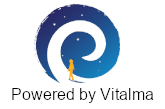I just returned from Nagaland after completing a 12-day course for counsellors and other community leaders who are engaged in addiction treatment & prevention work. It was a very meaningful and satisfying experience because the people there were very highly motivated considering the situation. In Nagaland which is threatening to cause severe damage and destroy the younger generation with over 30% of the people, young and non-young being affected by abuse of alcohol and other substances. So, the community leaders there are taking great interest to help them and to reduce the relapse rate which seems to be as high as 80%. I have been privileged to be involved in drug abuse counselling for the last few decades and also was on the panel of experts for the government of India officially assisting in addressing this issue to Governmental and non-governmental organizations along with helping the Ministry of Social Welfare and Empowerment to formulate policies which even during my time as a committee member in the second half of 1980s. A new legislation was passed and being built upon it.
This article highlights a few points for counsellors in particular and society in general for the readers of Vitalma as it has been sometime since the last post was uploaded. There are a few important elements of addressing the issue of drug abuse for those who are using it excessively causing holistic damage body, mind and spirit impairing functioning, be it school work or office work or domestic work or social relations or self-care.
- They are over whelmed by cravings that they cannot actually control anymore now and taking this even when not required for medical, social, religious or cultural purposes.
- Now many people seem to lecture at them, preach at them, advise them sincerely to give up but they seem to be helpless and powerless and confused.
- There is a treatment consisting of set of procedures, set of tasks or phases of the intervention. When a person abuses alcohol or any other substances like nicotine, tobacco, hallucinogens, opiates, stimulants which come under generic and popular names and when that intake affects them adversely. It’s understood that it is actually a chronic brain disease which is liable for relapse where a person loses control and is impaired causing huge problems for the family and the society.
- At a policy level there are two things to be looked at. (A) One is supplying control. (B) Second is Demand Control. Supply control is a more law and order problem issue handled by the government with the cooperation of public. Supply is also significantly influenced by its commercial implications. Substances or substance abuse is a multi – billion-dollar business. It’s used all over the world. Some of the supplies go through India and transit point also becomes vulnerable for use and abuse. Mafias also control some of these activities and therefore it’s a tough issue. Vigilance, border control, narcotics intelligence and intervention.
- There are countries, countries in Southeast Asia where possession of drugs beyond a certain quantity and uh which is very small of course and peddling in drugs would invite death penalty. It is taken so seriously. That is zero tolerance. And that’s going to be one important factor because in terms of demand control we need to understand that access to the drug is a contributing factor.
- Curiosity, experimentation is another factor. Coping with stresses and difficulties and challenges in life of different descriptions, relational, financial or otherwise. Some people seem to try to cope through use of drugs which temporarily seem to give some relief in the form of a false sense of euphoria, security due to the effect of these drugs on the brain causing some temporary disconnect between the body and the mind. So people think that there’s no problem and stuff like that and to discover very soon that they are into more difficulty because what they thought was a stimulant actually depresses them and what they thought was a stimulant you know causes them dependency. Even in the sports era we have seen how increasing number of sports personalities in international fora are being caught with drugs in their blood and have been disqualified bringing shame to themselves and to the country.
- Nobody will call occasional social drinking for medical, social, religious and cultural reasons as addiction. It also means that they don’t need to continue to do so or take it every day. In Europe, where people drink a glass of wine for just like we drink water is not considered addiction.
- Addiction is recognized through their impaired behaviour through blood tests, breath tests, psychological screening tools and primarily through clinical interview, listening to the person, listening to the perceptions of family members and friends and well-wishers, and the counsellor’s own observation.
- Now once this assessment is over comes the tough challenge of facing their denial, rationalization and unwillingness to participate in the intervention. That is where people if they are pressurized to come in for detox, for rehab or whatever, unfortunately they drop out in big numbers like up to 80%. Worldwide there is universal relapse among the best programs and there is about 50% sobriety rate. In an alcoholism rehabilitation program that I conducted some years ago we achieved 80% sobriety rate which was extremely good and the results published in Indian Journal of Psychiatry as a community-based model which is cost effective and higher rate of sobriety. In the next writeup will discuss different interventions and their sequences as well as recovery and rehabilitation process.
